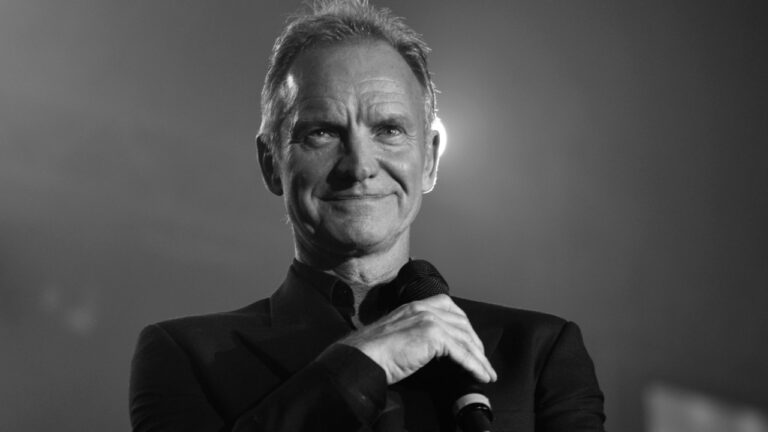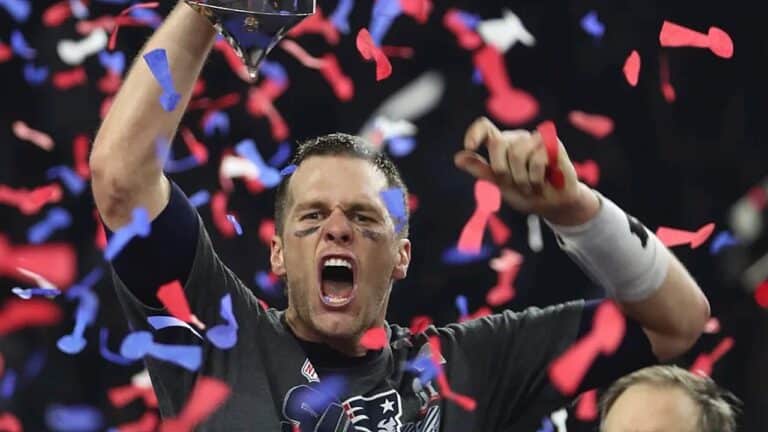Simian Cinema Awards: Go Bananas for the Best Movie Monkeys and Apes

Ever since a giant gorilla scaled the Empire State Building with a beautiful damsel in his hand in 1933’s King Kong, audiences have gone ape for simian cinema. Isn’t it about time someone doled out Simmies, aka Golden Bananas, to celebrate the greatest achievements of nonhuman primates on film?
Since the dawn of cinema, simians have made us laugh, shiver in our seats, and even cry. King Kong still reigns king at the box office — Godzilla x Kong: The New Empire recently opened at number one. Oscar winners such as Faye Dunaway and Clint Eastwood have acted opposite apes, as did a future U.S. president. Sigourney Weaver earned an Oscar nomination for playing naturalist Dian Fossey in Gorillas in the Mist. Horror and medical-disaster movies such as Monkey Shines and Outbreak call attention to animal rights and what happens when we mistreat our closest relatives in the animal kingdom.
Then there is the influential and thought-provoking Planet of the Apes franchise, which continued this May with Kingdom of the Planet of the Apes, the fourth film in the rebooted series.
Regardless of whether we are talking about actual simian performers, actors in ape suits, CG, or performance-capture creations, the following simian movie characters deserve a Golden Banana for their contributions to simian cinema.
Best Performance by a Stop-Motion Ape: King Kong (1933)

The stop-motion animation used to bring the giant ape to life in 1933’s King Kong may look dated in the current era of over-the-top CGI spectacles, but it changed the game during the pre-Code Hollywood days of the Great Depression. Stop-motion animation pioneer Willis H. O’Brien brought both Kong and the dinosaurs of Skull Island to life decades before the first computer animation.
The movie starring Fay Wray, Robert Armstrong, and Bruce Cabot is not only considered one of the greatest horror movies of all time, but it spawned sequels, remakes, and a MonsterVerse that continues to this day with Godzilla x Kong: The New Empire.
Best Social Commentary: Planet of the Apes (1968)

Do you remember the first time that you watched the ending of 1968’s Planet of the Apes and you had to pick your jaw up off the floor after astronaut George Taylor (Charlton Heston) realized he was actually on Earth? Taylor rides a horse along a beach and comes across a half-buried Statue of Liberty in the sand, after which he drops to his knees and cries out in despair that humans annihilated themselves during a nuclear war. Humanity’s failure allowed the apes to rise, develop language, and sow the seeds of a simian society that already showed signs of following humans down a path of warring factions and violence.
The thought-provoking sci-fi movie that forced viewers to consider race relations and societal problems in a new way won an honorary Oscar for Outstanding Makeup Achievement. Planet of the Apes spawned sequels, a TV series, a remake, and a rebooted series that continues to this day with Kingdom of the Planet of the Apes.
Best Performance by an Ape Opposite a Future U.S. President: Bedtime for Bonzo (1951)

In the 1951 comedy Bedtime for Bonzo, future U.S. president Ronald Reagan stars opposite a chimpanzee named Peggy, who plays the male chimp Bonzo. Reagan plays a psychology professor who tries to impose 1950s morals on Bonzo and teach him right from wrong. So not only did Peggy have to act opposite the future 40th president of the United States, she had to do it as a drag king. No pressure, right?
Sadly, Peggy lost her life in a fire and did not reprise her role in the sequel, Bonzo Goes to College. According to The Guardian, Reagan also passed on the sequel because he thought the plot involving a “brainy chimp” leading “a college football team to victory” was unbelievable. In an ironic case of life imitating art, people said the same thing in 1980 about an actor becoming president of the United States.
Best Biopic About a Primatologist: Gorillas in the Mist (1988)

In the Oscar-nominated movie Gorillas in the Mist, Sigourney Weaver plays Dian Fossey — a primatologist and conservationist who devoted her life to the study of vanishing African mountain gorillas. Although Fossey was murdered in her Rwanda cabin in 1985, and her death remains unsolved, she is the primary reason that mountain gorillas still exist today.
The last entry in Fossey’s diary reads, “When you realize the value of all life, you dwell less on what is past and concentrate on the preservation of the future.” Weaver, who was nominated for a Best Actress Oscar for her role in Gorillas in the Mist, remains the honorary chairperson of the Dian Fossey Gorilla Fund.
Best Flying Monkeys: The Wizard of Oz (1939)

As far as winged monkeys in simian cinema are concerned, nothing tops the blue-skinned flying primates in The Wizard of Oz for sheer terror. Ask anyone about their memories watching the classic MGM musical, and most will mention that the winged-monkey minions of the Wicked Witch of the West scarred them for life or, at the very least, provided enough nightmare fuel to last their entire childhood.
Pat Walshe — a circus performer who specialized in playing animals — portrayed Nikko, the boss winged monkey in The Wizard of Oz. This Golden Banana is for you, sir.
Best Prosthetic Makeup Effects: Rick Baker for Planet of the Apes (2001)

Tim Burton’s 2001 Planet of the Apes remake starring Mark Wahlberg failed to win over many viewers with its confusing plot and twist on the original ending, but it had two things going for it: Danny Elfman’s percussion-heavy score and Oscar winner Rick Baker’s impressive prosthetic makeup for all of the ape characters. In Roger Ebert’s review of the movie, he wrote, “Rick Baker’s makeup is convincing even in the extreme closeups, and his apes sparkle with personality and presence.”
Despite being a modest financial success for 20th Century Fox, the studio scrapped plans for a sequel to Burton’s film and instead rebooted the entire franchise with 2011’s Rise of the Planet of the Apes.
Best Performance by a Homicidal Service Monkey: Monkey Shines (1988)

Night of the Living Dead director George A. Romero is best remembered for his zombie movies, but Monkey Shines will make you think twice about monkeying around with service animals. In the movie, Jason Beghe plays Allan Mann — a law student and athlete who becomes a quadriplegic after getting hit by a truck. Although his service capuchin monkey named Ella seems helpful at first, the monkey is injected with a serum intended to boost her intelligence, which has the unfortunate side effect of making her a jealous primate with zero tolerance for human females in Allan’s life. In short, Ella goes apesh*t and starts slashing people who come between her and her man.
A capuchin monkey named Boo played Ella, as well as several monkey doubles and four yak-fur-adorned puppets — one of which was even remoted-controlled. This Golden Banana is for you, Boo.
Best Simian Performance Capture: Andy Serkis in Rise of the Planet of the Apes (2011)

By the time 20th Century Fox rebooted the Planet of the Apes franchise with Rupert Wyatt’s Rise of the Planet of the Apes, CG effects were favored over prosthetic makeup. The apes in Rise of the Planet of the Apes weren’t just created from scratch on a Mac, however. Performance capture helped Andy Serkis — who plays the superintelligent chimpanzee Caesar — bring the character to life in a way that proved difficult in previous movies under heavy latex makeup. You can see the anguish in Caesar’s face and feel his pain as he is unjustly separated from his human father (James Franco) and placed in an abusive ape shelter.
Unlike Tim Burton’s 2001 Planet of the Apes remake, Rise of the Planet of the Apes successfully rebooted the franchise and spawned several sequels. The Academy nominated Rise of the Planet of the Apes for the Best Visual Effects Oscar, and we award Serkis a long-overdue Golden Banana for his remarkable performance.
Best Adoptive Ape Mother: Kala in Greystoke: The Legend of Tarzan, Lord of the Apes (1984)

Tarzan has appeared in scores of movies, but Greystoke: The Legend of Tarzan, Lord of the Apes became the first to receive an Oscar nomination. Hugh Hudson’s adventure film based on Edgar Rice Burroughs’ 1912 novel Tarzan of the Apes received three Oscar nominations, including one for Best Makeup.
Although it didn’t win any Academy Awards, we think Ailsa Berk deserves a Golden Banana for playing Kala, the adoptive ape mother of John Clayton, aka Tarzan (Christopher Lambert). Kala took in a baby, John Clayton, and raised him as her own after she lost her own chimp baby. It’s not easy to emote under pounds of rubbery latex, but Berk — a British actress, dancer, and puppeteer — sells it with her body movements.
Best Performance by an Ape Villain: Koba in Dawn of the Planet of the Apes (2014)

Andy Serkis returned to expertly play ape leader Caesar in 2014’s Dawn of the Planet of the Apes, but the real standout is Toby Kebbell as Koba — a bonobo who hates humans with a unique fury. With his milky eye and battle scars, Koba proves terrifying when he tries to murder Caesar and start a war with humans hiding out in the remnants of San Francisco.
Koba’s most chilling moment comes when he tries to entertain two human soldiers and make them laugh so he can get close enough to kill them. Koba, the character, was too dangerous to keep around for another sequel, but kudos to Kebbell’s performance and for giving life to the best ape villain in Simian cinema. This Simmie is for you, buddy.
Best Performance by Hominins Around a Giant Alien Monolith: 2001: A Space Odyssey (1968)

In the opening of Stanley Kubrick’s sci-fi masterpiece 2001: A Space Odyssey, a group of apelike early humans go bananas when an alien black monolith suddenly appears one day, and its perfect geometric shape forces them to look inward. The hominins decide that they must protect the monolith from other tribes, and when one picks up a bone and uses it as a weapon for the first time, the music swells, and the stage is set for humans to become the warring species we remain today.
Kubrick won an Oscar for Best Special Visual Effects, and today, we give the actors playing the hominins a Golden Banana for helping us understand where it all went downhill for early humans.
Best Use of Woody Harrelson as a Jerk in an Ape-Centric Movie: War for the Planet of the Apes (2017)

As its title implies, humans and apes engage in an all-out war in War for the Planet of the Apes, the third film in the rebooted Planet of the Apes franchise that kicked off with Rise of the Planet of the Apes. Whereas the previous movie, Dawn of the Planet of the Apes, featured Koba — a sinister simian villain who won a Golden Banana earlier in this feature — War for the Planet of the Apes has an unhinged Woody Harrelson as Colonel J. Wesley McCullough. The Colonel talks tough, shaves his head with a straight razor, and uses traitor apes as “donkeys” to do his bidding.
Harrelson excels at playing psychos — Natural Born Killers comes to mind—but his irrational hatred of apes in War for the Planet of the Apes is next-level crazy. When the Colonel’s worst fears come true, and he gets infected with the simian virus that renders humans mute, he looks to Caesar, the lead chimpanzee, to end his miserable existence. A less-than-sympathetic Caesar refuses to help, and the Colonel takes his own life, ending a Golden Banana-worthy performance for the history books by Harrelson.
Best Use of Simian Sign Language: Congo (1995)

Frank Marshall’s 1995 adventure movie Congo, based on Michael Crichton’s novel of the same name, became a box office hit despite getting panned by critics. We’re not saying the movie is great cinema, but neither is Poor Things, which won a shameful amount of awards.
Part of Congo‘s popular appeal at the time rested on the character Amy, a mountain gorilla adept at using sign language that a computer translates into a digitized voice. An actor in an ape suit may have played Amy in the movie, but the character who longed to return to her jungle home increased public awareness of real-life apes who do communicate with humans and each other using sign language. For that, Amy deserves a Golden Banana and her place alongside the greats of simian cinema.
Best Accidental Ape Chemist: Esther in Monkey Business (1952)

Yes, that’s a picture of Marilyn Monroe holding a chimpanzee in a behind-the-scenes photo from Howard Hawks’ Monkey Business, which also stars Cary Grant, Ginger Rogers, and Charles Coburn. Despite the screwball comedy’s playful yet erroneous title, chimpanzees are not monkeys, the latter of which have tails. Get woke, people.
Back to the plot: Grant plays Dr. Barnaby Fulton, a chemist searching for a youthful elixir. Enter Esther, a lab chimpanzee who gets loose, mixes a bunch of chemicals, and pours the concoction into the lab’s water cooler. When Dr. Fulton later drinks from the water cooler, he starts acting like a man 20 years younger who just discovered his libido. Yes, Esther’s amateur chemistry propels the entire plot of Monkey Business, so she deserves a Golden Banana for her performance and suffering the indignity of being called a monkey.
Best Performance by an Orangutan Opposite a Future Oscar Winner: Manis in Every Which Way but Loose (1978)

After a string of hit spaghetti Westerns and Dirty Harry movies, studio types reportedly advised Clint Eastwood against starring opposite an orangutan in the action-comedy Every Which Way but Loose. Eastwood — who later became the Oscar-winning director of Million Dollar Baby and Unforgiven — ignored the advice. Although trashed by critics, Every Which Way but Loose became a massive box office hit and spawned a sequel.
An orangutan actor named Manis played Clyde in Every Which Way but Loose. Although Manis’ on-screen chemistry with Eastwood is obvious, the orangutan grew too much between that movie and the 1980 sequel, Any Which Way You Can, which had to recast Clyde. Manis also stars as the limo driver in Cannonball Run II. After Manis retired from movies, he returned to Las Vegas to work in his trainers’ act. This Golden Banana goes to Manis for expertly handling a hairy situation, starring opposite the Hollywood legend who played Dirty Harry.
Best King Kong Remake: King Kong (2005)

The character King Kong has appeared in 13 movies (and counting), 3 with the title King Kong: the 1933 original, the 1976 remake starring Jeff Bridges and Jessica Lange, and Peter Jackson’s 2005 version.
The latter stars Naomi Watts as struggling vaudeville performer Ann Darrow and Andy Serkis in a motion-capture performance as Kong sets the bar as high as the Empire State Building. Not only are the special effects convincing enough to bring Skull Island’s bizarre creatures — especially the giant insects — to life, but for the first time, Kong could fully emote on-screen because motion-capture technology reproduced Serkis’ subtlest facial moments.
The resulting epic adventure movie became a worldwide blockbuster and won three Academy Awards: Best Sound Editing, Best Sound Mixing, and Best Visual Effects. It also just won a Golden Banana for Best King Kong remake.
Best Movie About a Giant Gorilla Named Something Other Than Kong: Mighty Joe Young (1998)

In the 1998 adventure movie, Mighty Joe Young — a remake of the 1949 film of the same name—Charlize Theron plays Jill Young, a woman who was orphaned as a child by the same poacher that orphaned a giant mountain gorilla named Joe. A creature-suit actor named John Alexander plays Joe, whom makeup legend Rick Baker designed.
Although the movie bombed at the box office, Theron went on to win a Best Actress Oscar years later for her performance in Monster. Mighty Joe Young was not too mighty at the box office, but its Disney-fied story about the struggle to return a gorilla to his native habitat tugged at the heartstrings of those who saw it and hopefully got at least a few young viewers interested in protecting gorillas and other threatened species.
Best Performance by an Ape Opposite an Oscar-Winning Diva: Dunston Checks In (1996)

Although she won a Best Actress Oscar for her performance in Network, Faye Dunaway developed a reputation for devouring the scenery after her unintentionally hilarious performance as Joan Crawford in 1981’s Mommie Dearest. Fast-forward to 1996’s Dunston Checks In, and Dunaway plays a ruthless, image-obsessed hotel manager whose establishment is infiltrated by a jewel thief (Rupert Everett) who uses an orangutan named Dunston to help him commit heists.
Sam the Orangutan (that’s his full credited name) plays Dunston, who longs to escape his life of crime in this silly children’s comedy also starring Jason Alexander and Paul Reubens. How many apes can say they’ve worked opposite an Oscar winner covered in cake? Only Sam, which he did without being upstaged — or distracted by the tasty dessert — earned him a well-deserved Golden Banana.
Best Movie in Which a Giant Gorilla Crushes Samuel L. Jackson: Kong: Skull Island (2017)

Samuel L. Jackson has dealt with snakes on a plane, genetically enhanced sharks, and other creatures during his long career. In Kong: Skull Island — the second movie in the Warner Bros. MonsterVerse — Jackson plays U.S. Army Lieutenant Colonel Preston Packard. To Packard, Kong represents his “white whale,” and the Colonel plans to avenge his fallen soldiers by hatching a plan to kill Kong on the giant gorilla’s home turf, Skull Island. In the end, Kong literally crushes Packard’s plan, and the audience cheers.
Alongside Samuel L. Jackson, Kong: Skull Island stars Tom Hiddleston, Brie Larson, John Goodman, and John C. Reilly. The movie successfully rebooted Kong for the big screen and even earned an Oscar nomination for Best Visual Effects. This big-screen incarnation of Kong continues with Godzilla x Kong: The New Empire.
Best Chimpanzee Pilot: Virgil in Project X (1987)

In the sci-fi comedy-drama Project X, Matthew Broderick plays airman Jimmy Garrett, who is tasked with training chimpanzees to pilot planes in a top-secret Air Force program. When Garrett discovers that one of the chimps, Virgil, knows sign language, he contacts the woman (Helen Hunt) who taught Virgil sign language after Garrett learns that Virgil will be exposed to a lethal dose of radiation.
A chimpanzee named Willie played Virgil in Project X. According to the Primarily Primates Newsletter, Willie and Harry — who played Virgil’s “girlfriend” in Project X— retired from showbiz to live out their lives in an ape sanctuary in Bexar County, Texas. This Golden Banana is to thank you for your service to Simian Cinema, Willie.
Best Baseball-Playing Chimpanzee: Ed (1996)

We’re not going to gaslight you into thinking that the sports comedy Ed, starring Matt LeBlanc as a pitcher on a baseball team with a chimpanzee player, is some kind of misunderstood classic. The panned movie got nominated for four Razzies, including Worst Picture and Worst Screen Couple (for LeBlanc and Ed the chimpanzee).
In the movie credits, Jay Caputo and Denise Cheshire are both credited for playing Ed. Is Ed the first (only?) instance of a chimpanzee playing baseball on-screen? Probably. For that, Ed deserves a Golden Banana for pushing the envelope of simian cinema. We’re not sure if the makers of the 2013 South Korean sports comedy Mr. Go were inspired by Ed, but the former features a gorilla who becomes a baseball superstar.
Best Performance by a Virus-Spreading Monkey: Outbreak (1995)

Long before COVID-19 or even the more realistic medical-disaster movie Contagion, Wolfgang Petersen’s Outbreak starring Dustin Hoffman, Rene Russo, Morgan Freeman, and Cuba Gooding Jr. got us worried about the damage one virus-carrying monkey could inflict on humanity. Spoiler alert: a lot.
In Outbreak, an infected white-headed capuchin monkey is released into the woods surrounding a coastal California town after the peeved primate scratches and infects a pet store owner. As the Ebola-type virus begins to spread, a team of military and CDC personnel embark on an expansive hunt to find the simian super-spreader.
Outbreak‘s popularity surged in 2020 during the COVID-19 pandemic. This Golden Banana goes to the white-headed capuchin monkey in Outbreak, whose performance was so powerful that it crippled the nation’s supply of toilet paper.
Best Performance by an Orangutan as a Chimpanzee: Link (1986)

In the British horror film Link, starring Elisabeth Shue and Terence Stamp, a superintelligent chimpanzee named Link goes a little bit bananas after his owners try to euthanize him. An orangutan named Locke played Link, while actual chimpanzees named Carrie and Jed played the characters Voodoo and Imp, respectively.
As seen in the picture above, Link (in the red vest) is an orangutan wearing prosthetic ears and whose fur was dyed a darker color to make him pass for a chimpanzee. Locke and his owner, animal trainer Ray Berwick, deserve a Golden Banana for Locke’s convincing performance as another ape species.
Best Chimp Comic Relief in an Already Unintentionally Hilarious Movie: Showgirls (1995)

Director Paul Verhoeven and writer Joe Eszterhas purportedly made Showgirls with serious intentions, but the “drama” about a drifter named Nomi Malone (Elizabeth Berkley) who will do anything to get a spot as a showgirl in Goddess at the Stardust instead became a camp classic. The endlessly quotable cinematic treasure starring Kyle MacLachlan, Gina Gershon, and Glenn Plummer may have gotten trashed by critics upon its initial release, but Showgirls has since become a home video hit and embraced by the LGBTQ community.
During one scene backstage, as Nomi and the other showgirls prepare to hit the stage, a few chimpanzees from another act get loose and create havoc in the dressing room. A grinning Nomi captures one of the cheeky chimps before the movie returns to the “serious” story about the cutthroat world of showgirls. For expertly providing comic relief in a movie that required none, this Golden Banana is for you, chimps. As Cristal Connors would say, “Thanks, darlin’.”





